This article explains how to setup an Altitude Tent in your own home, based on our offering. So you can start comfortably sleeping in high altitudes.
Sleeping in the altitude tent can cause difficulties similar to true altitudes and the usage of the tent is at the user’s risk. Be very cautious and consult the use with your general practitioner if unsure.
To start sleeping in the Altitude Tent, there are few simple steps to do, all of them explained further down in this article.
| Table of contents |
|---|
| Altitude Tent |
| Hypoxico Generator Unit |
| Interconnect Unit and the Tent |
| Measurements |
| Setting up the right altitude |
| Sleep |
Altitude Tent
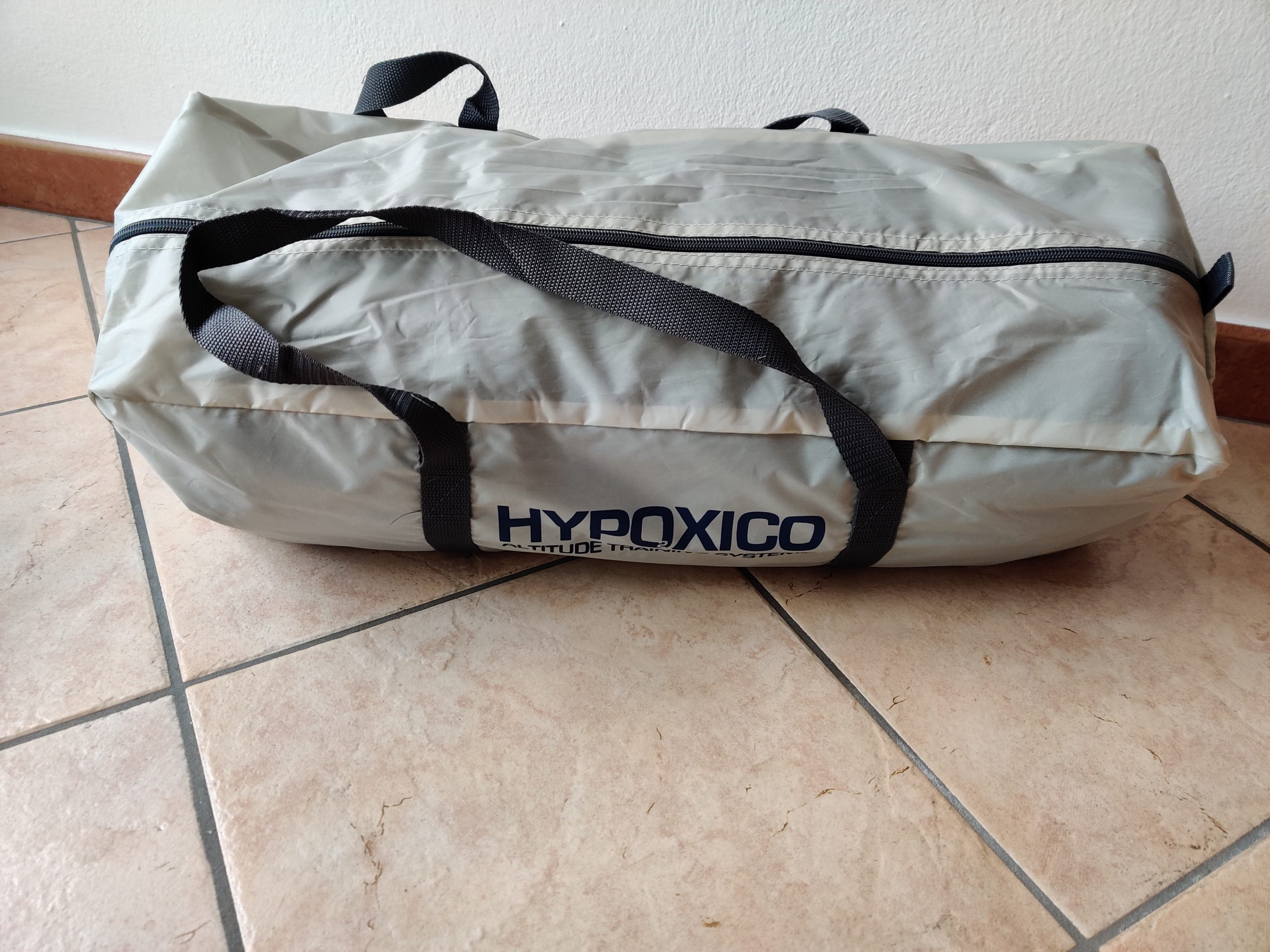
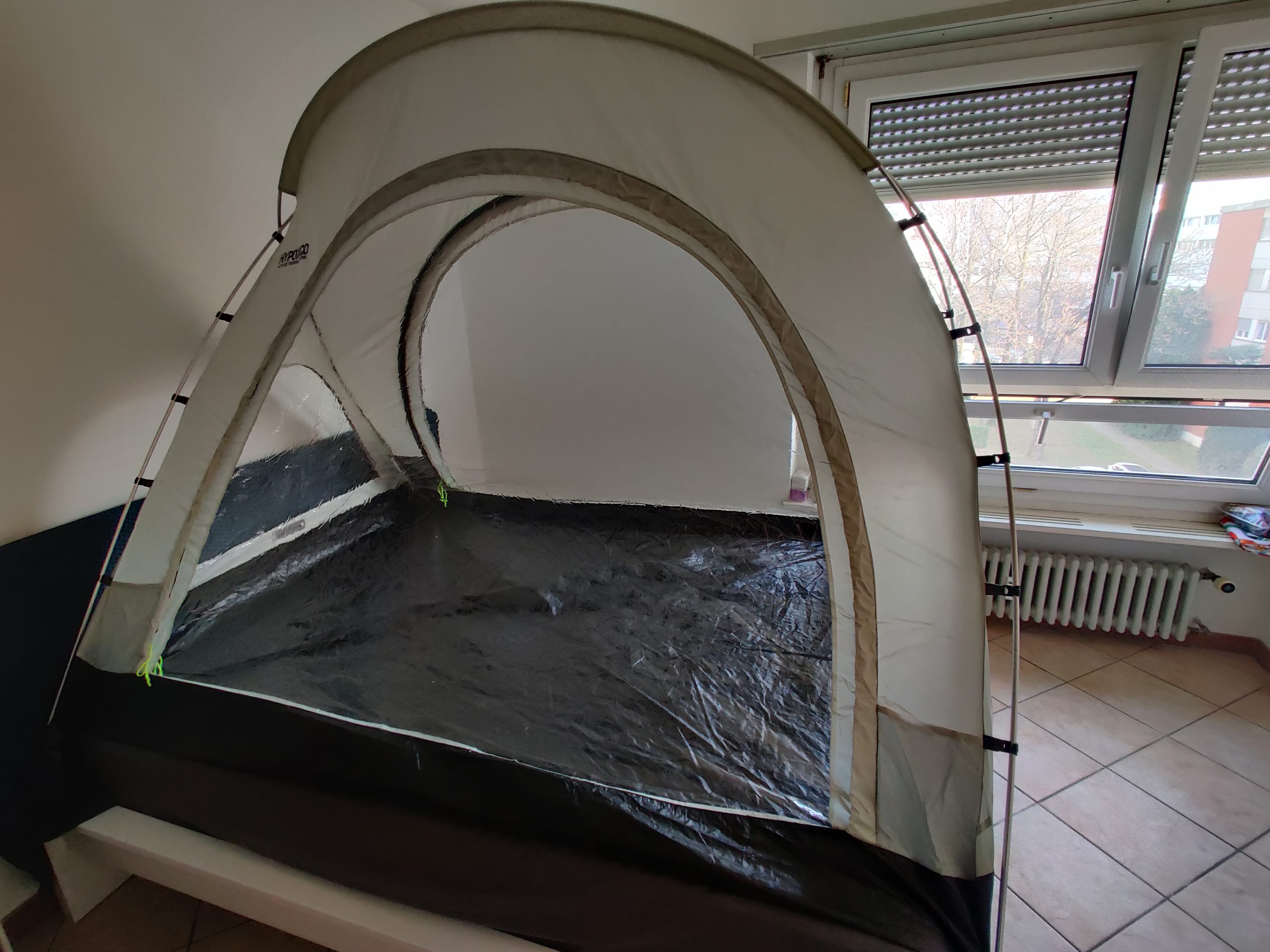
Our Altitude Tent is a queen bed size tent. It’s made of materials that keep the air at the selected altitude inside the tent while not mixing it with the air outside of the tent.
The Altitude Tent is quite spacey, two adults can comfortable sleep inside. There are two small pockets on each side to keep some belongings if needed. To sleep comfortably, it is recommended to put a sleeping mattress of the same or smaller size into the tent. Both sides of the tent have big openings with zippers.
Hypoxico Generator Unit
The Hypoxico Generator Unit is a device that produces an oxygen level according to the selected altitude. Keep the unit in the place with good air flow from all directions. The Unit requires two cables, one is the electricity power cord, second is a hose that supplies the oxygen level to the tent.
The Generator Unit produces sound at an approximate level of 60 dB. To prioritize your comfort, it is recommended to place the unit in a separate room that is also well-ventilated for the Air Intake and free from excessive moisture. Furthermore, the Air Hose provided is long enough to conveniently reach from the tent to the Unit.
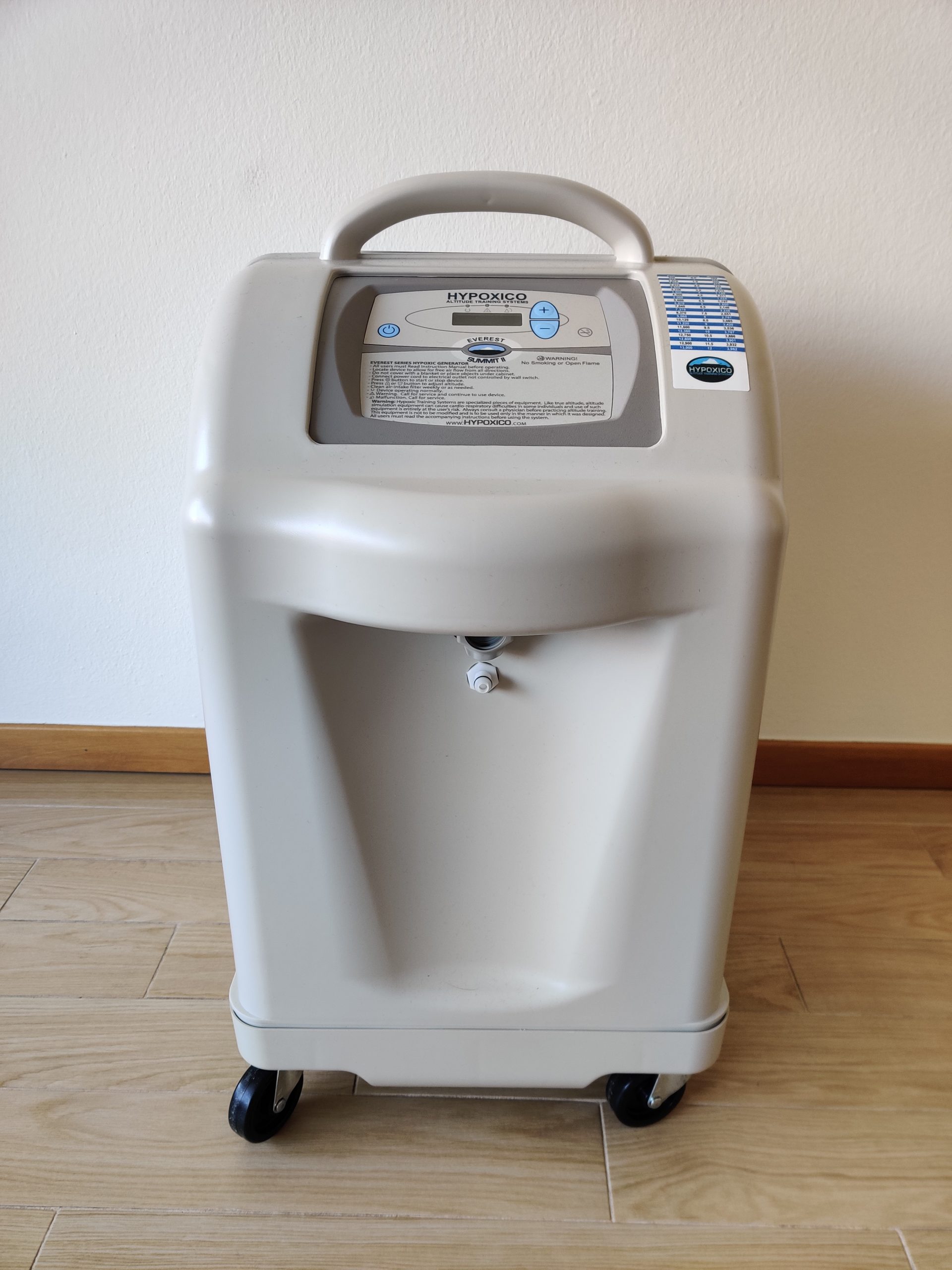
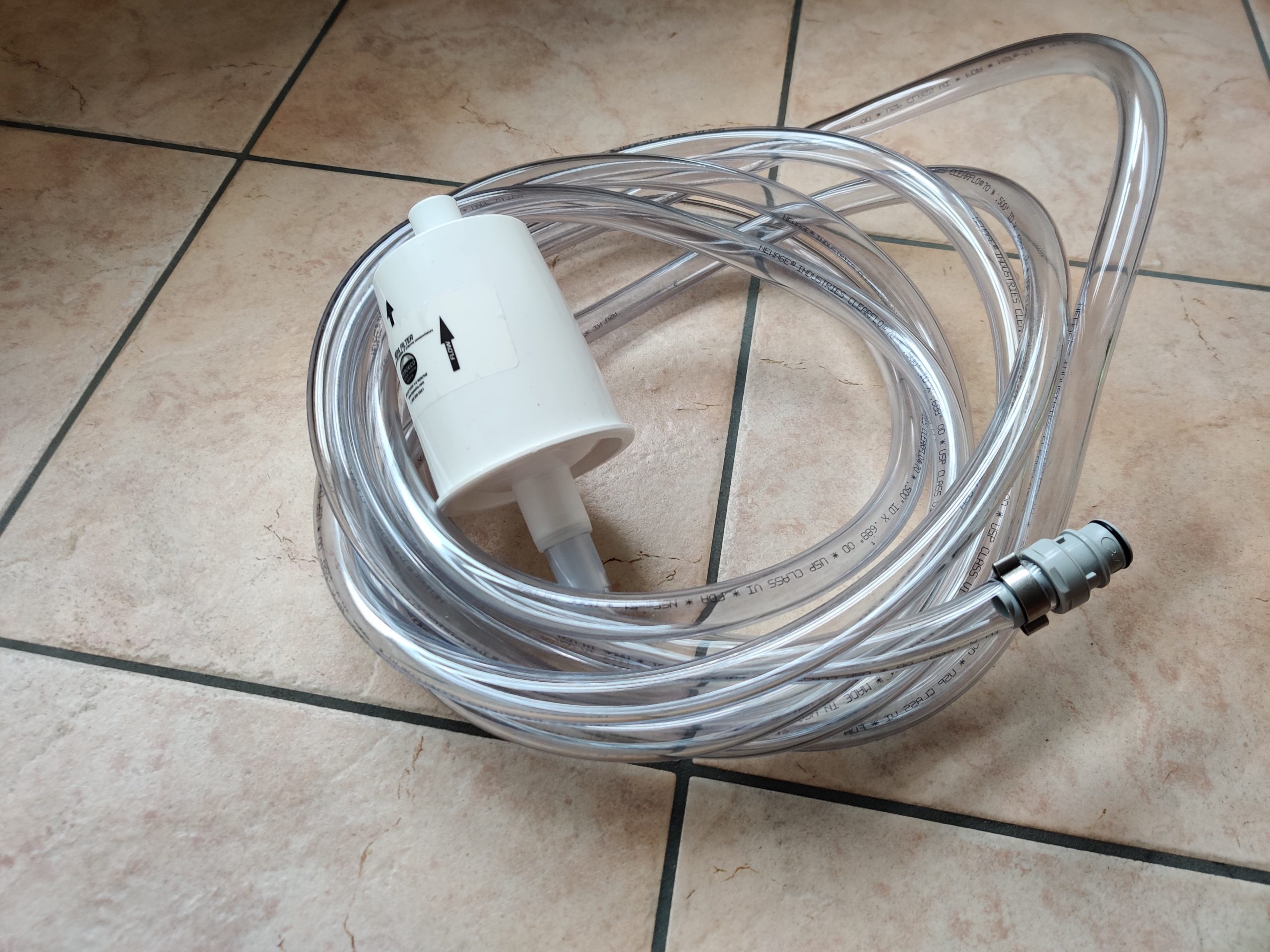
Interconnect Tent and the Generator
The air is delivered over the hose that needs to be plugged into the Generator on one side and inserted into the Tent on the other side. Unit has two connectors, plug it into the bigger one. There is also a button on the bottom of the connector for disconnecting the hose. There is a special opening in the Tent for the hose. As it can be seen on the picture, the hose ends with the air filter that ensures the only clean air flows into the Tent.
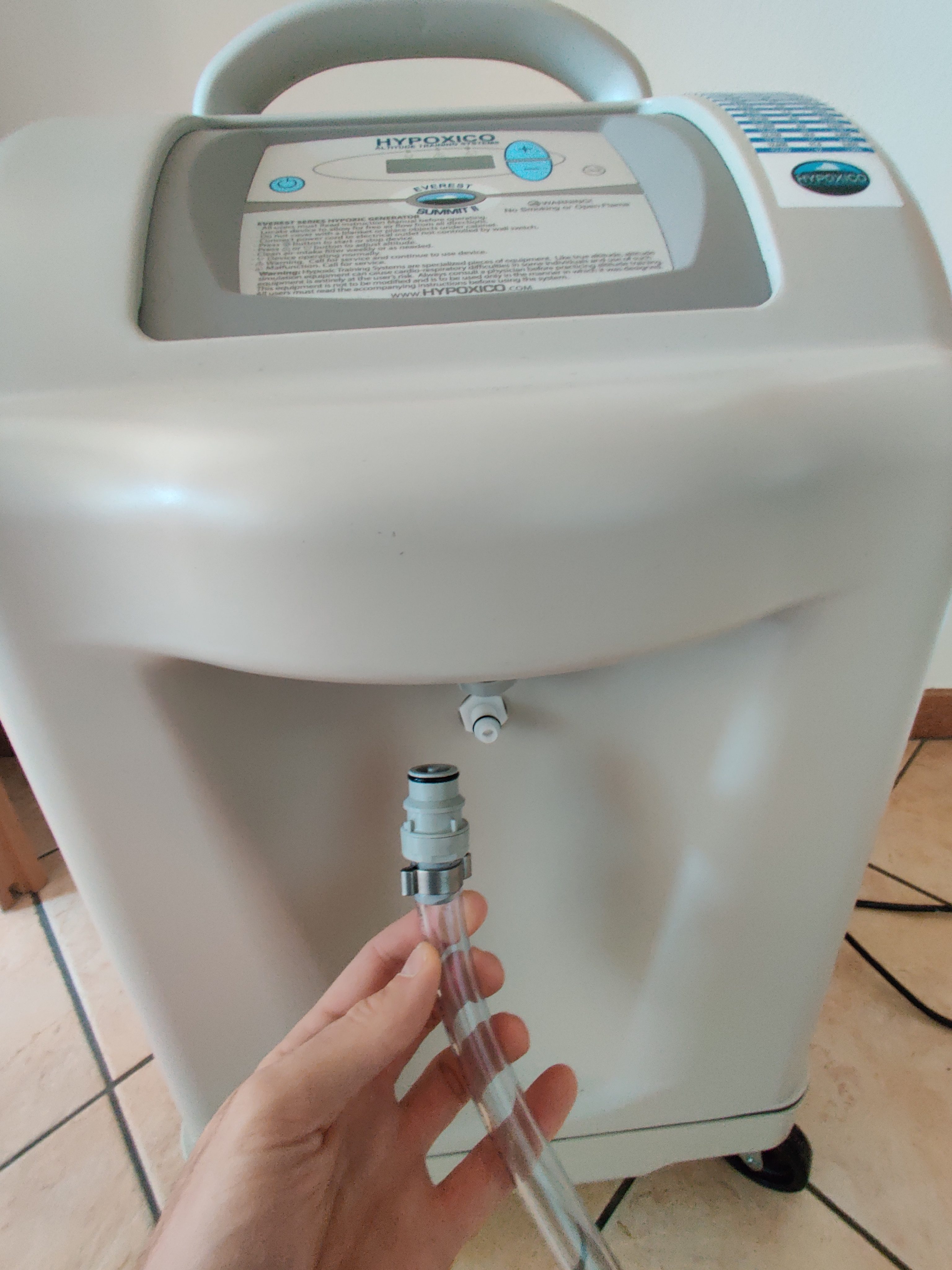
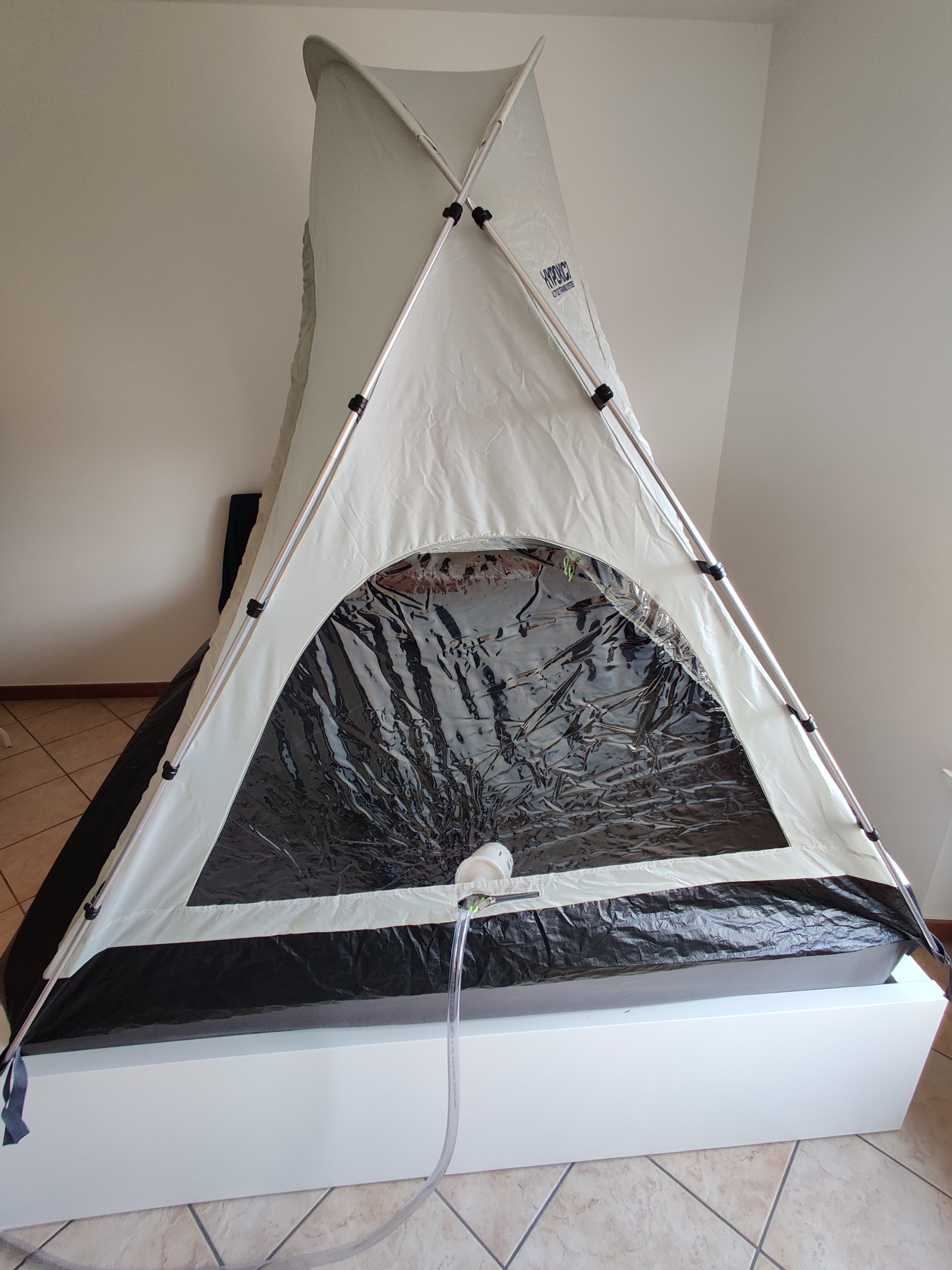
Measurements
One needs to take a very conservative approach for the sleeping at the high altitude. With increased altitude, the level of oxygen in our blood decreases. One of the metric that helps us to understand our body is the Oxygen Saturation, also called SpO2. SpO2 can be measured by a special device, either dedicated Pulse Oximeter or modern smartwatch. The device works on following principle, it determines the blood oxygen level by shining light into the skin. Hemoglobin in the red cells that carries the oxygen will absorb more infrared light and allows more red light to pass through. Hemoglobin without carrying the oxygen has the opposite behavior. The ratio of red light measurement to the infra light measurements is calculated and converted to SpO2 value.
According to Mayo Clinic, ideal SpO2 should be between 100% and 95%. Values below 90 percent are considered as low. A picture below shows the SpO2 measurement of 99% during a normal “daily” altitude.
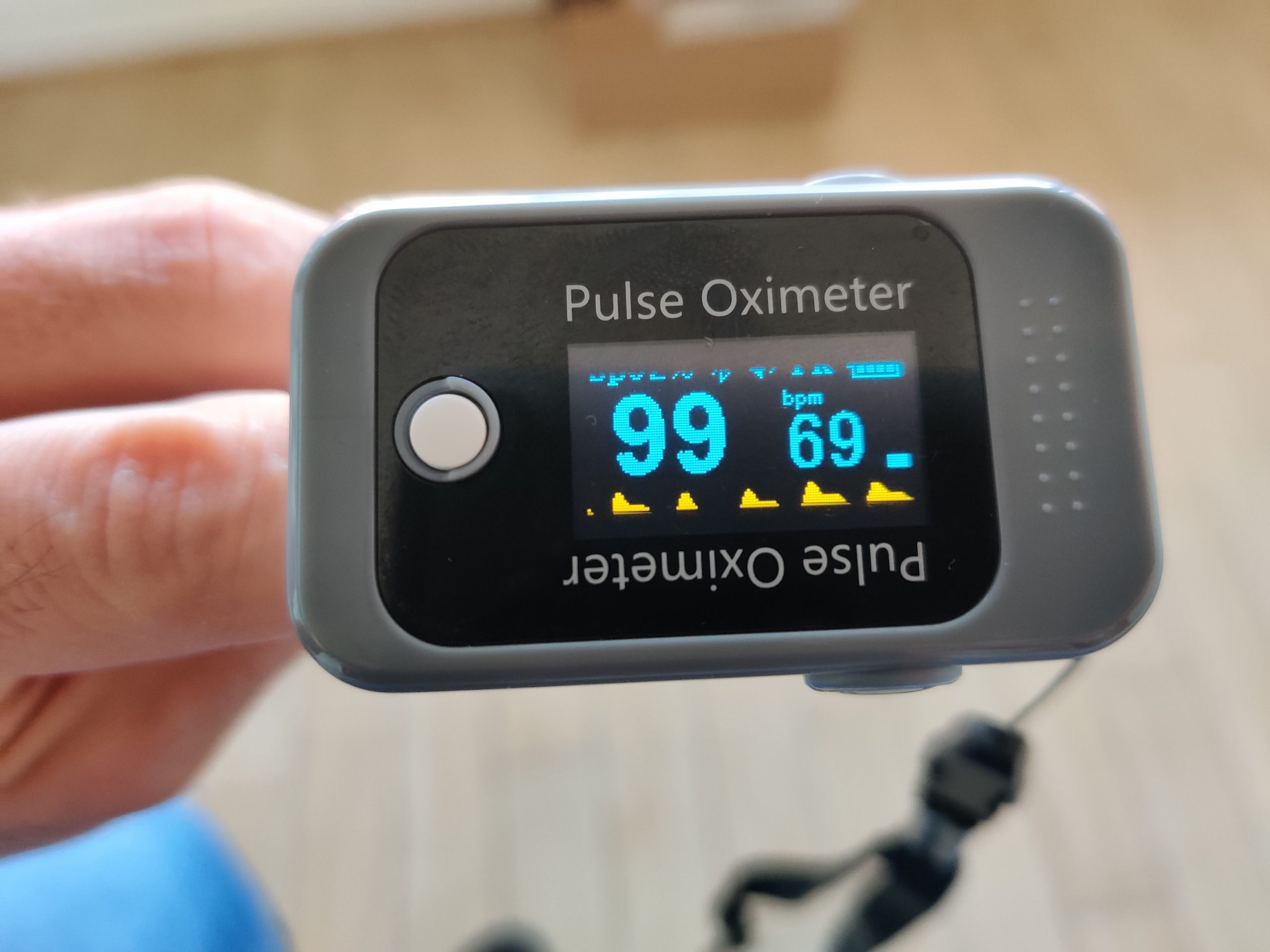
If the body is not prepared for the high altitude, the oxygen saturation at the high altitude level will be lower than normal. Therefore, the goal is to setup the Altitude Tent environment where the values of Sp02 will be lower, but still comfortable for the sleeping over night. Again, if the altitude is adjusted for too high and body is not used, one can cause herself difficulties, maybe be out of breath, headaches and can get the altitude sickness at the end.
Setting up the right altitude
Be conservative and adjust the altitude on the Hypoxico Unit close to the altitude typical for your regular sport activities. There is a translation table on the Unit. There are buttons on the Unit to increase or decrease the altitude. At this example, the Unit below was set to generate oxygen at the level of 1311 meters above the sea level. The Unit remembers the configured settings, so after powering off and on again, one can start at the same setting.
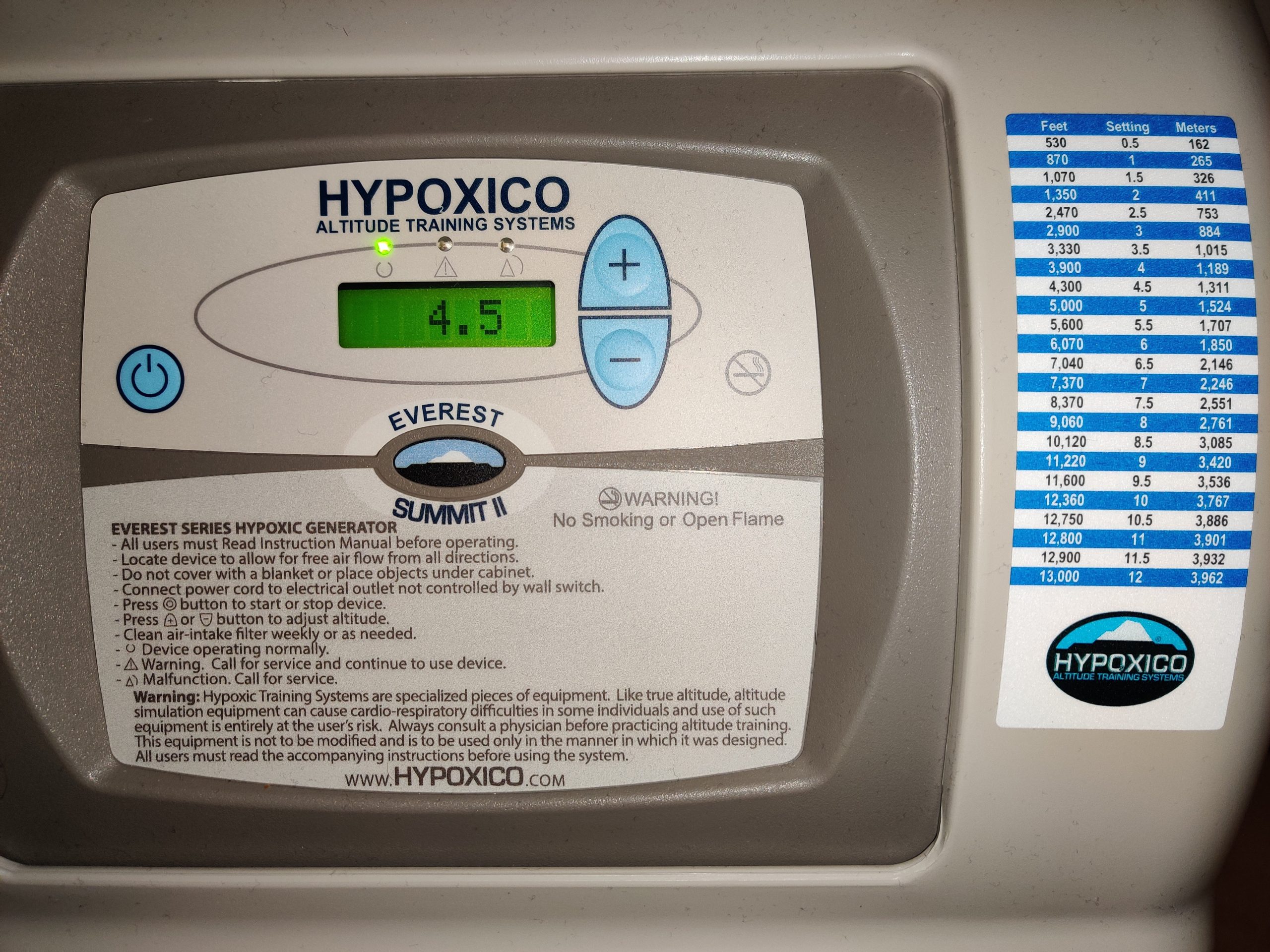
It takes approximately 30 to 60 minutes until the oxygen level in the Tent stabilizes for the required altitude. Each opening of the tent actually releases and mixes the “altitude tent air” with the room air and it will take some time again to stabilize the required oxygen level.
To test, how does it feel in the selected altitude level, it’s time to try the Altitude Tent. Start the Hypoxico Unit choose proper settings, close yourself in the tent for hour or so and continuously measure the SpO2 using Pulse Oximeter or your favorite smartwatch while enjoying time in the tent.
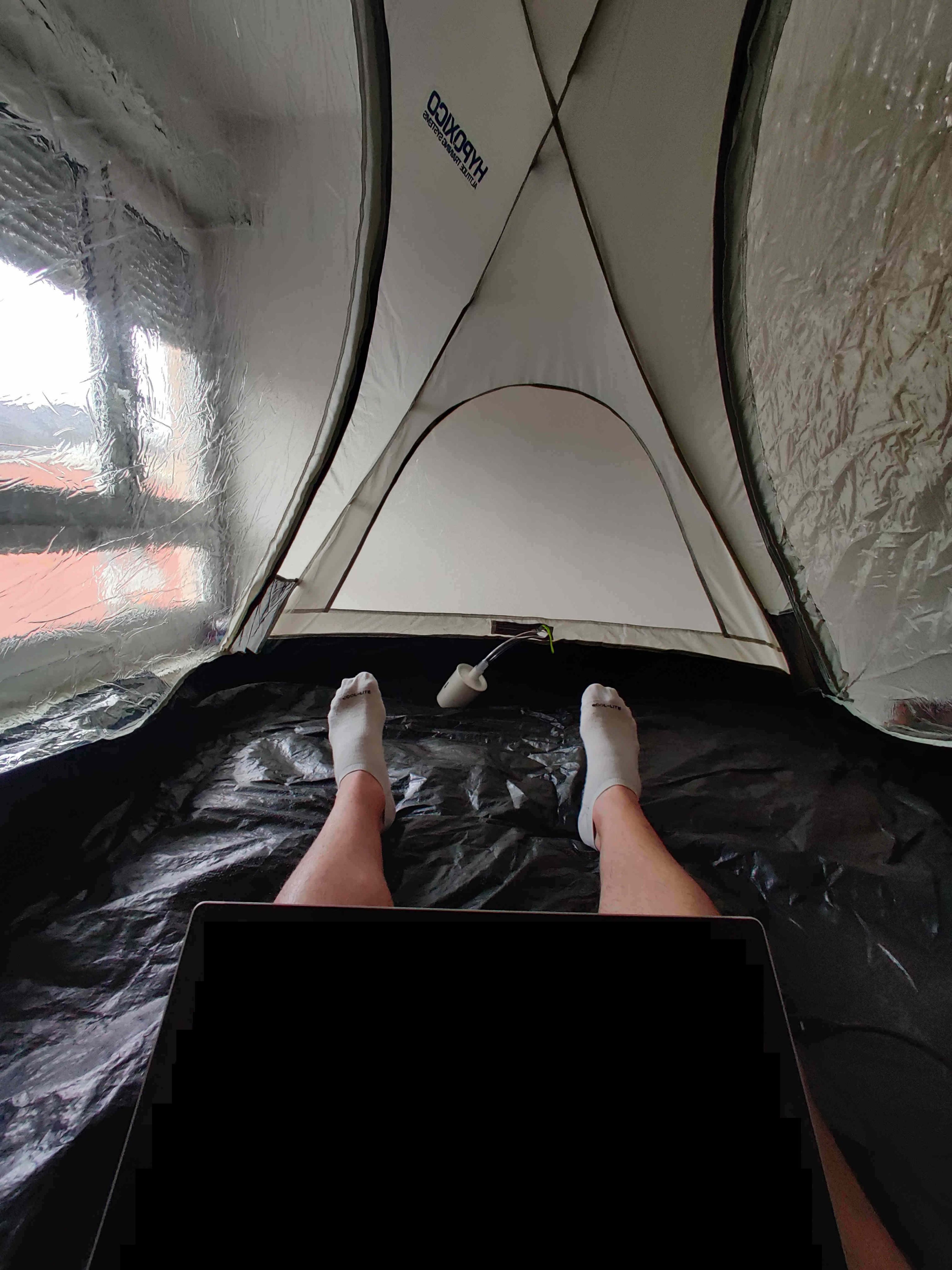
Sleep
If you feel comfortable and the SpO2 level is around 90%, that’s your altitude for the start. Be also aware that during the sleep, your body will feel it a bit more than just staying in the tent for a hour. Both, heartbeat and respiration rate, might be higher than usual. In case of any inconveniences during the sleep, open the Tent and stop the Generator.
Wearing the big Pulse Oximeter device during the sleep is bit cumbersome. Modern smartwatches are capable to measure and record SpO2 during the sleep, and draw nice graphs for the entire sleeping period.
The picture below depicts the timeline of the oxygen saturation during the sleep (also called Pulse Ox Timeline). The average SpO2 was 88%. Let’s closely look at the timeline again. What is interesting is that after the midnight, the oxygen saturation increased to 100%. Why ? Well, the nature is stronger than the human will. One opened the tent for the “natural break” that immediately resulted to the mix of air and oxygen saturation raised to the normal level.
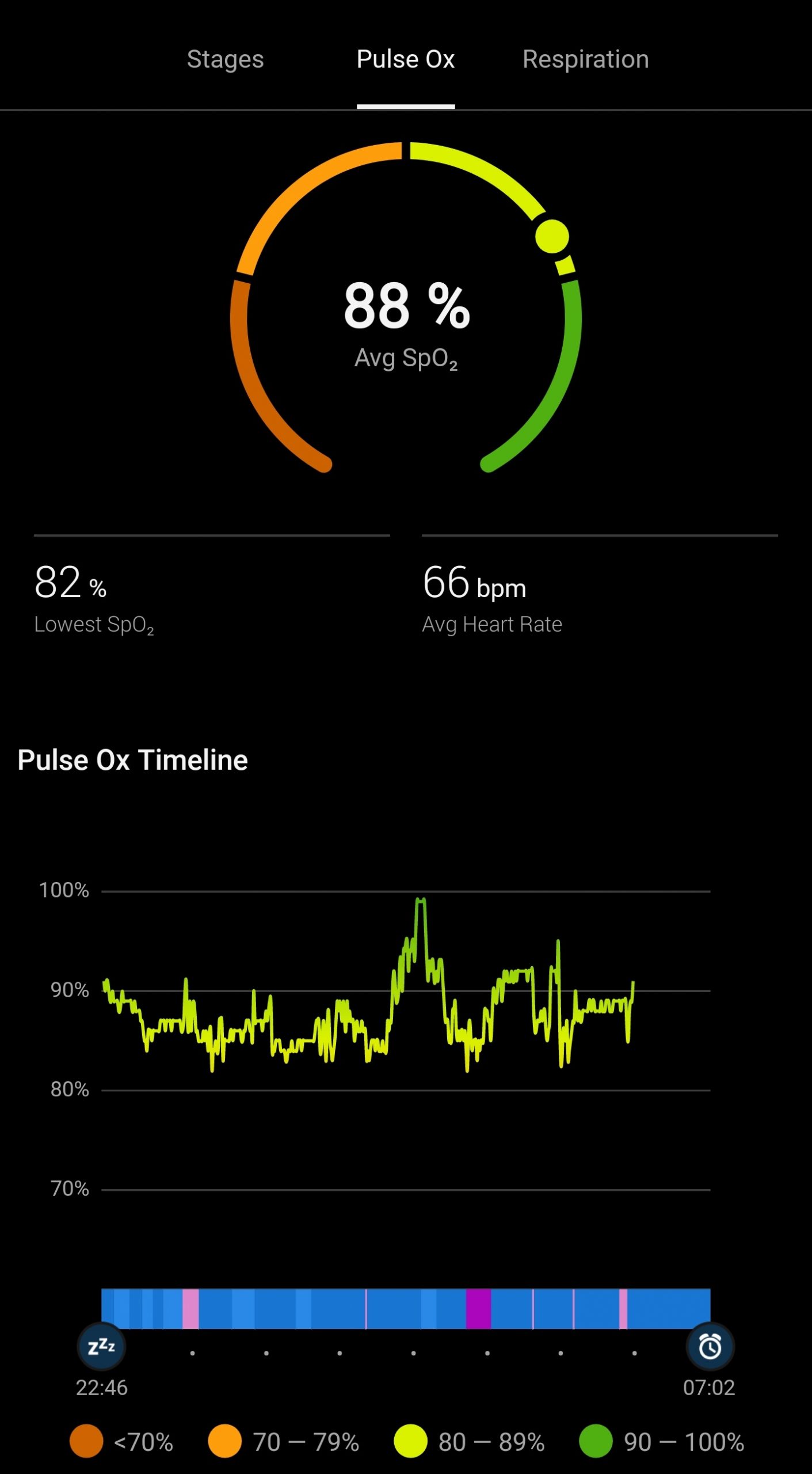
Now you are prepared to start sleeping in the Altitude Tent ! One last remark. Be always mindful when setting up the altitude. In case of any inconveniences, be responsible to yourself. The health is the priority no matter what.